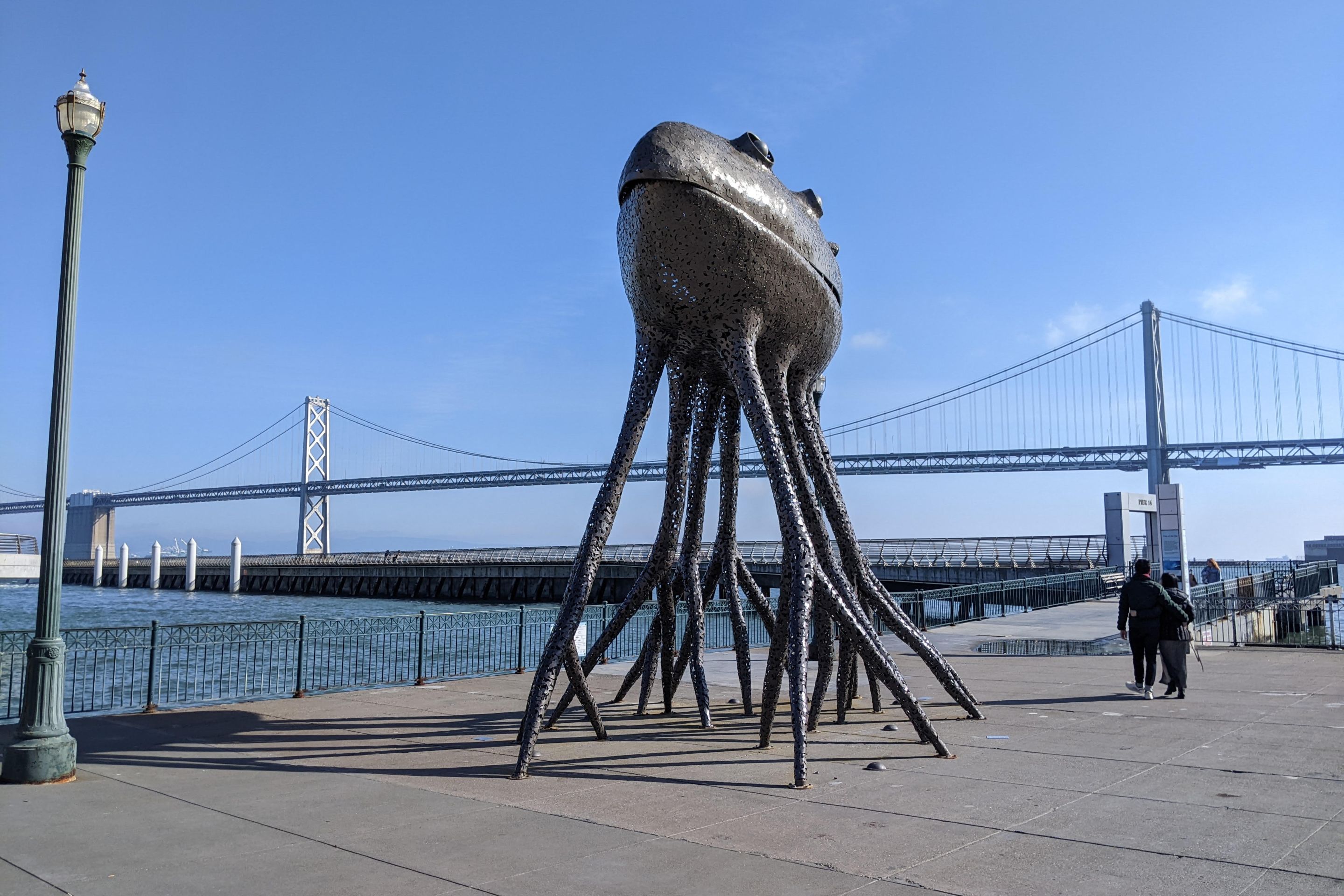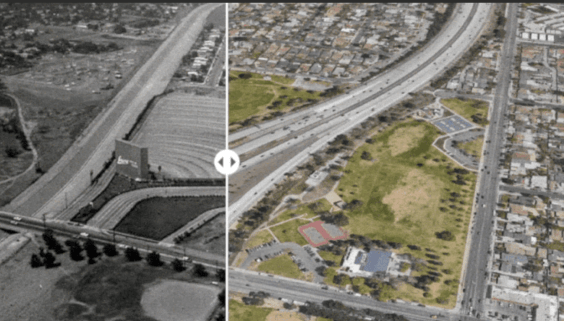 Supervisor Dufty and Mayor Newsom at the 17th St. plaza dedication cerimony, via Jamison on Flickr
Supervisor Dufty and Mayor Newsom at the 17th St. plaza dedication cerimony, via Jamison on FlickrStanding before a crowd of more than 100 people, many of them city staff who had worked to realize the transformation of an underutilized street into a "Pavement to Parks" pedestrian refuge, Mayor Gavin Newsom dedicated the first of at least four such plazas that will be constructed around the city.
"I know that many of you have been talking about this for... at least 13 or 14 years. Formally it's been at least a decade since community groups came together and talked about converting this pavement into a plaza," said Newsom. "I refer to it as 'democratizing this public realm' and the street realm, and looking differently in terms of our open space, open space in terms of taking back this pavement, and converting it into plazas."
Newsom added: "If we're successful here...if the community all agrees that this works... if the transit riders and the activists all agree that this works, then we look forward to bringing this to other parts of the city."
The city will evaluate the plazas after 60 days with the community and then extend the trial for another four months, if it is desired. Additionally, Newsom said three other plazas are already being designed, with support for the concept among supervisors in the districts where they would be located, and there are nine additional locations for the program at some point in the future. The next three projects will be, in this order:
- Wolf's Cafe at 8th Street and 16th Street in Lower Potrero
- Naples Green in the Excelsior
- Guerrero Street and San Jose in the outer Mission
 DPW reused curb blocks from their salvage yard and temporary bollards as planters to humanize the space. Photo: Matthew Roth
DPW reused curb blocks from their salvage yard and temporary bollards as planters to humanize the space. Photo: Matthew RothDPW Chief Ed Reiskin, considered the driving force of the project, was pleased with the result, though they repainted the plaza at the last minute to the new color (the Mayor was unhappy with the yellow). In the end, Reiskin estimated that the plaza cost between $20,000-25,000, including resources and labor.
"We learned a lot in the process. There are a lot of complexities technically, working with the various city departments. The purpose of this is to improve things, to improve the public realm, not to make anyone's life more difficult. I think the evaluation process will enable us to ensure that there are no adverse effects to anybody."
Supervisor Bevan Dufty, who has long supported opening public space in his district, and who helped negotiate with some residents on Hartford Street who were unhappy with the planning process, lauded his constituents and the city as a whole for the vibrant debate that so often accompanies change in San Francisco.
"Process gives you an opportunity to succeed. You think about aspects of projects you might not have considered. If I thought the status quo was good, I would have been more worried, but this has basically felt like a freeway on this street, such fast moving traffic coming East on Market Street. This is an intersection that has had so much red light crossing, dangerous conditions."
"Our goal is to really create new, exciting public spaces in San Francisco and I'm thrilled that they're starting here in the Castro District," he added. "We've needed more places to have a commons, more places to be together and enjoy each other in these busy days. More people and less traffic is a recipe for a great city."
Liz Ogbu, Project Designer for Public Architecture, which donated its time and services to realize the design of the project, said, "This pedestrian plaza can help connect people to a place, a neighborhood, and a community.”
City Planning Director John Rahaim said that the concerns that had been raised by residents on Hartford Street was illustrative for the department and for future projects. "This is a lesson in things we can do simply and relatively quickly and frankly to test it out. Each case is a laboratory for the next case; it's a great model for us."
 The crowd listening to Supervisor Dufty introducing the plaza. Photo: Matthew Roth
The crowd listening to Supervisor Dufty introducing the plaza. Photo: Matthew RothNow that the project has been installed, the test of its success will require public use and enjoyment of the space. The Castro/Upper Market CBD will oversee much of the maintenance and upkeep of the plaza, including hiring security for weekend hours when club goers and bar hoppers frequent the area. "The CBD board is learning that we really are the entity in the neighborhood to begin to take control and manage the space. But we're going to approach it more as the coordinator, coordinating with other neighborhood associations and other neighborhood groups to pool all of our ideas and resources... so that a lot of diversity and a lot of different kinds of programming can occur here."
Kit Hodge, Director of the Great Streets Project, said they are focusing on analysis of the project, conducting baseline studies of pedestrian and bicycle counts and street-user surveys. They will repeat the surveys in two months and conduct a business study to gauge impact on commercial interests. "I think overall people vote with their feet and with their dollars. If we see a measurable increase in numbers in the plaza...as well as a positive impact to businesses, I think that's a huge measure of success."
At the end of his remarks, Mayor Newsom underscored the simplicity of the installation of the project and the importance of activating and managing the space now that it has been installed.
"It took 17 years of planning, 72 hours to install," said Newsom. "It's not that complex. We can be doing a lot more of this and in a quicker way if you adopt and embrace this proposal. We are counting on all of you."
See more photos of the project on our Flickr pool here.
 A couple enjoy the plaza after the dedication ceremony ended. Several others were using the tables to craft jewelry and have lunch. Photo: Matthew Roth
A couple enjoy the plaza after the dedication ceremony ended. Several others were using the tables to craft jewelry and have lunch. Photo: Matthew Roth




